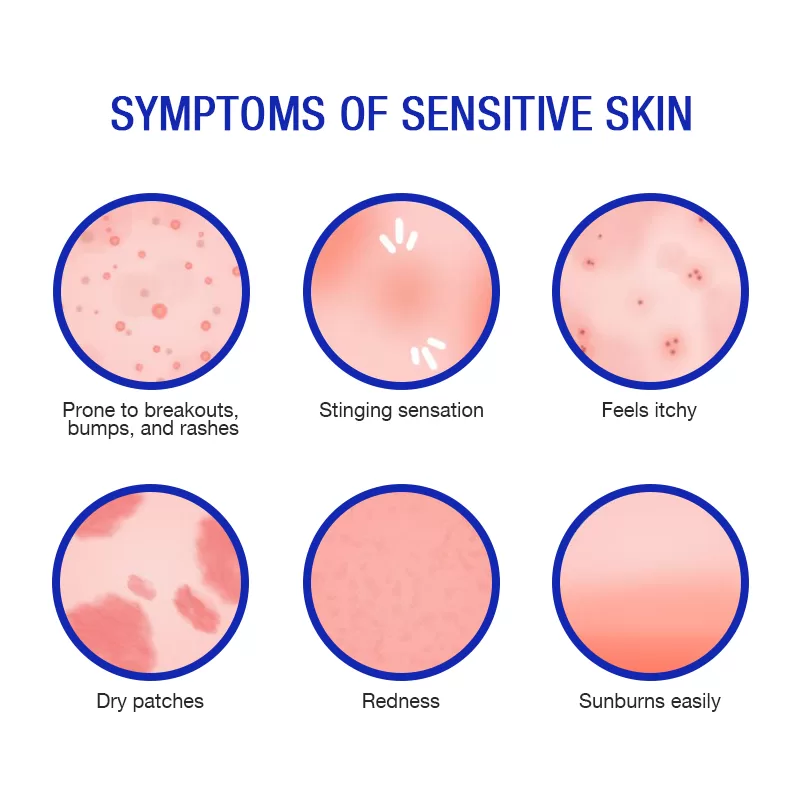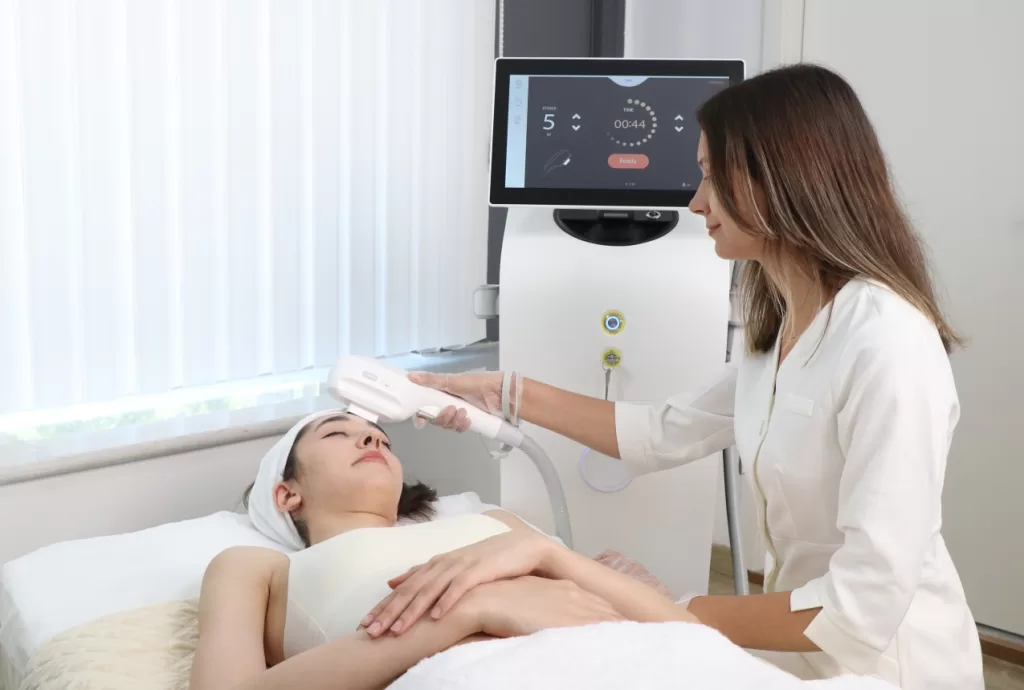Introduction
Are you one of the millions struggling with sensitive skin? You're not alone. Sensitive skin can be a daily battle, manifesting as redness, irritation, dryness, and discomfort. Understanding the intricacies of sensitive skin, its causes, and effective treatments can lead you on the path to a healthier, more resilient complexion.
What is Sensitive Skin?
Sensitive skin is not a clinical diagnosis but a symptom that encompasses various skin reactions. It can manifest as redness, itching, burning, and dryness. People with sensitive skin often react to environmental factors, skincare products, or even stress. It is crucial to identify the triggers and manage them effectively to maintain healthy skin.
What Causes Sensitive Skin?
Many things can cause sensitive skin, from underlying health conditions to environmental factors. If home treatments don’t provide relief, talk with a healthcare professional. It can result from various factors, including:
(1)Genetic Predisposition: Some individuals are born with a naturally sensitive skin barrier.
(2)Environmental Factors: Extreme weather conditions, pollution, and UV radiation can compromise the skin barrier, leading to sensitivity.
(3)Skincare Products: Harsh chemicals, fragrances, and preservatives in skincare products can irritate the skin.
(4)Underlying Skin Conditions: Conditions like eczema, rosacea, and dermatitis often cause heightened skin sensitivity.
(5)Lifestyle Factors: Stress, poor diet, and lack of sleep can exacerbate skin sensitivity.
What Are the Symptoms of Skin Sensitivity?
Many people with a genetic predisposition toward sensitive skin are well aware of their condition, having managed skin irritations throughout their lives. However, sensitive skin can also develop over time. Repeated exposure to chemicals and other irritants can increase skin reactivity. Symptoms of sensitive skin may include:
- Stinging and burning
- Rashes or hives (erythema)
- Swelling
- Itching
- Redness or discoloration
- Dry skin
- Blistering
- Cracked or bleeding skin
- Patches of leathery skin

Your specific symptoms may vary depending on your triggers. For example, irritant contact dermatitis is the most common form of sensitive skin. This type typically involves a rash that follows the application of an irritating chemical, damaging the skin’s barrier and causing a breakout.
What Are the Professional Treatments for Sensitive Skin?
Addressing sensitive skin effectively often requires a multi-faceted approach. While over-the-counter products can help, advanced medical treatments offer more targeted and long-lasting results. Here, we explore some cutting-edge treatments and devices recommended for treating such skin types.
Radiofrequency (RF) Therapy

Radiofrequency therapy uses electromagnetic waves to heat the deeper layers of the skin, stimulating collagen production and improving skin texture. It is a non-invasive treatment suitable for sensitive skin as it enhances the skin's natural healing process without causing surface damage.
RF therapy delivers controlled heat to the dermis, which triggers collagen and elastin production. This process helps to strengthen the skin barrier, reducing sensitivity and improving overall skin resilience.
A typical RF treatment involves 4-6 sessions, spaced 2-4 weeks apart, depending on the skin's response and the severity of the sensitivity.
RF therapy has minimal downtime. Some patients might experience slight redness or swelling, which usually subsides within a few hours. It's essential to keep the skin hydrated and protected from the sun post-treatment.
Near-Infrared Light (NIR) Therapy

Near-Infrared Light Therapy, also known as NIR Milk Light Therapy, is another effective treatment for sensitive skin. This method uses a high-power light source in the near-infrared spectrum to target various skin issues, including redness, pigmentation, and texture irregularities.
Near-Infrared Light Therapy delivers light pulses to the skin, which are absorbed by pigmented cells and blood vessels. This process helps to reduce redness and even out skin tone, promoting a healthier and less reactive complexion.
Similar to RF therapy, Near-Infrared Light Therapy usually requires 4-6 sessions, with treatments spaced 3-4 weeks apart.
Post-treatment, the skin may appear slightly red or feel warm, but these effects typically resolve within a few hours. Sun protection is crucial to prevent further sensitivity.
How To Do Post-Treatment Care?
Proper care after treatment is vital to ensure the best results and maintain skin health. Here are some tips for post-treatment care:
(1)Hydration: Keeping the skin well-hydrated is essential. Use a gentle, fragrance-free moisturizer to prevent dryness and irritation.
(2)Sun Protection: Always use broad-spectrum sunscreen with at least SPF 30. Sun exposure can worsen sensitivity and undo the benefits of the treatments.
(3)Gentle Skincare: Stick to mild, non-irritating skincare products. Avoid exfoliants and harsh chemicals that can aggravate the skin.
(4)Monitor Skin Reactions: Pay attention to how your skin reacts to different products and treatments. Consult your dermatologist if you notice any adverse reactions.
Conclusion
Sensitive skin can be challenging to manage, but with the right approach and advanced treatments, it is possible to achieve healthier, more resilient skin. Understanding its causes and opting for professional treatments like RF therapy and Intense Pulsed Light (IPL) Therapy can provide significant improvements. Always follow up with diligent post-treatment care to maintain and enhance the results. Consult with a dermatologist to tailor a treatment plan that suits your specific needs, and embark on the journey to calm, balanced, and beautiful skin.






